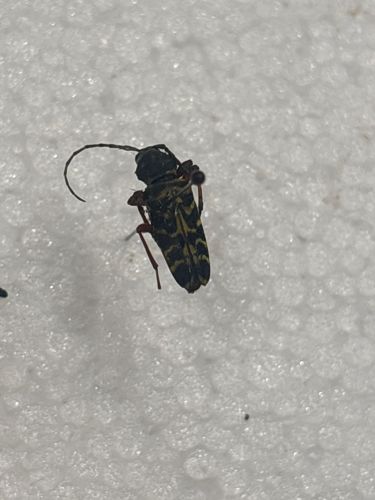Longhorn beetle (likely a Flower Longhorn Beetle or similar species)
Scientific Name: Family Cerambycidae, likely Lepturinae subfamily
Order & Family: Order Coleoptera, Family Cerambycidae
Size: Typically 10-25 mm (0.4-1.0 inch) in length, but can vary by species.

Natural Habitat
Forests, woodlands, meadows, and areas with flowering plants where host trees/shrubs are present. Larvae develop in decaying or living wood.
Diet & Feeding
Adults often feed on pollen and nectar from flowers, especially those with open, accessible nectaries. Larvae are wood-borers, feeding on the wood of various trees and shrubs, often preferring dead or dying timber but sometimes attacking living trees.
Behavior Patterns
Adults are typically active during the day, especially in warm, sunny weather, and are attracted to flowers. They are strong fliers. Females lay eggs in crevices of bark or directly into wood. Larvae bore into the wood as they develop, often taking several years to mature. Pupation occurs within the wood.
Risks & Benefits
Potential risks include damage to trees, especially by the larval stage of some species which can weaken trees or timber. Some species are considered pests in forestry or to fruit trees. Benefits include their role as pollinators (adults feeding on nectar/pollen) and decomposers (larvae breaking down wood, aiding nutrient cycling in ecosystems).
Identified on: 9/19/2025